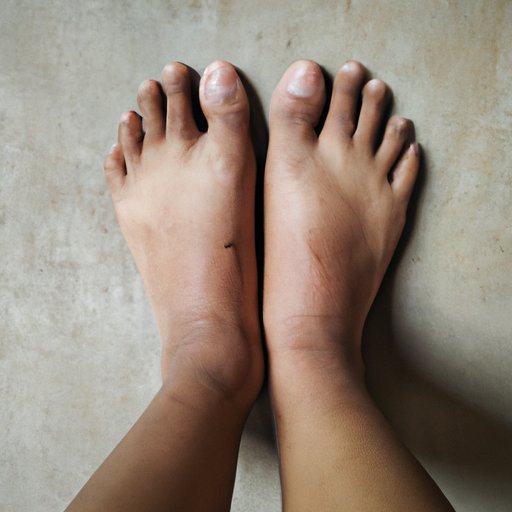
Introduction
Toes play an important role in walking, maintaining balance, and providing support. Losing one of your toes, while not life-threatening, can understandably be alarming. In this article, we will explore the impact of losing a toe on walking and balance. We will also delve into the anatomy of a foot and how the absence of a toe can affect the overall structure of the foot and walking pattern. Finally, we will offer tips and strategies for adapting to changes in mobility, including footwear modifications and the benefits of physical therapy.
Understanding the Function of Toes: Can Walking Be Affected if You Lose One?
Toes are critical in terms of grasping the ground and maintaining balance while walking. Each toe plays a specific role. The big toe is responsible for the majority of your weight while walking, while the smaller toes work to grip and balance your foot on uneven surfaces, and they help push you forward.
If you lose one of your toes, it could affect your walking, balance, and stability. Experiencing difficulty when walking, particularly on uneven or difficult terrain, is likely, and it may also impact one’s athletic performance.
The Anatomy of a Foot: Exploring How the Absence of a Toe Affects Walking
The human foot is a complex structure comprised of 26 bones, 33 joints, and over 100 muscles, tendons, and ligaments. Each component plays a unique role in walking and overall foot function. When one toe is missing, the whole foot structure is affected.
The toes help distribute one’s weight, and not having a proper equalized weight with the toes can affect the foot arch.
Losing Your Toe: Steps to Take to Ensure You Can Continue Walking Without Difficulty
Proper preoperative and postoperative care is vitally important for foot amputations to ensure the foot heals correctly, and mobility is restored.
Initially, it may be necessary to use crutches or a walker for stability until you become accustomed to walking without a toe. Regular exercise and physical therapy can also help build muscle strength and improve mobility.
Life After Amputation: Tips for Adapting to Changes in Walking
Losing a toe can be a significant adjustment, and it is important to recognize that it may impact one’s emotional and psychological well-being. Acceptance of the situation can help you to feel more comfortable in your new skin.
It is important to try to remain active and continue doing things you enjoy despite the change in mobility. You may find it helpful to connect with a support group or speak with a mental health professional who can help you navigate the potential emotional challenges of this change.
The Benefits of Physical Therapy: How to Regain Walking Confidence With or Without a Toe
Physical therapy often plays a critical role in regaining walking confidence and adapt to the change in mobility that comes from losing a toe. A qualified physical therapist can work with the patient to start small and build slowly, incorporating specific exercises and techniques tailored for the individual to restore confidence and strength.
Additionally, physical therapy can help prevent future injury and improve overall foot health.
Footwear Modifications for Amputees: Adjusting to Losing a Toe and Keeping Your Feet Happy
It is vital to wear proper footwear that supports the foot in the right places when one or more toes are missing. It’s best to aim for shoes that are roomy enough to accommodate the foot without the added strain on the other toes.
If necessary, shoe inserts or custom shoes can be made by a shoemaker or orthotics specialist to best suit your specific needs.
Conclusion
Losing a toe can undoubtedly be scary, but with proper care, it doesn’t have to be life-altering forever. Physical therapy and footwear modifications can make a significant difference in restoring walking confidence. Speaking with a counselor can also help adjust to the emotional impact of this change.
Final Thoughts
Even when things like losing a toe happen, life can still be normal after making the necessary adjustments. Don’t let losing a toe deter you from living life to the fullest.





